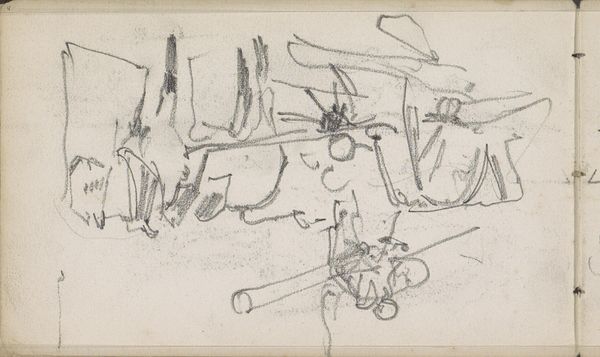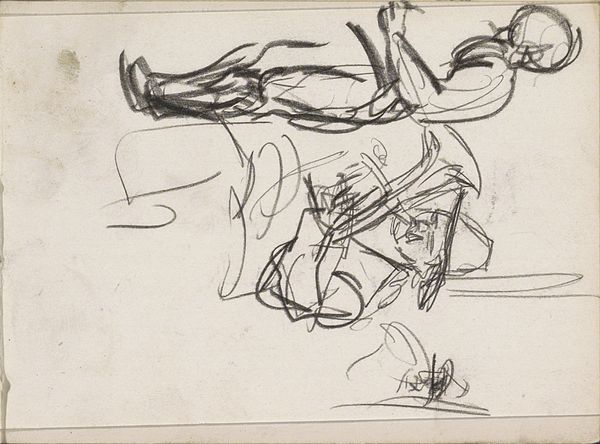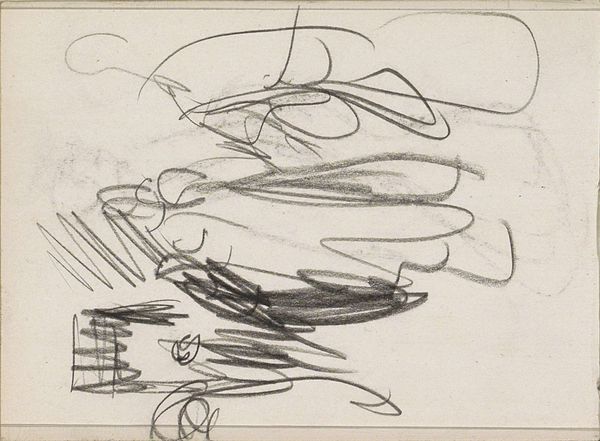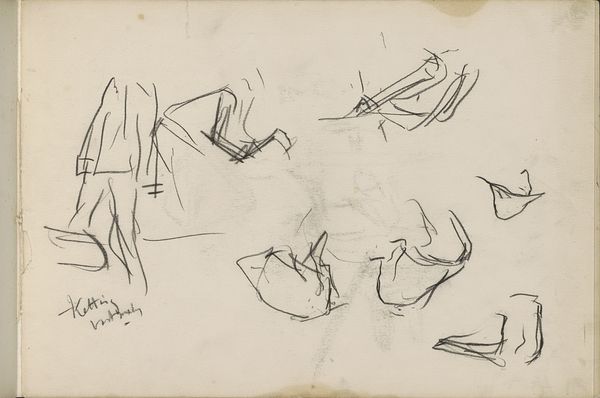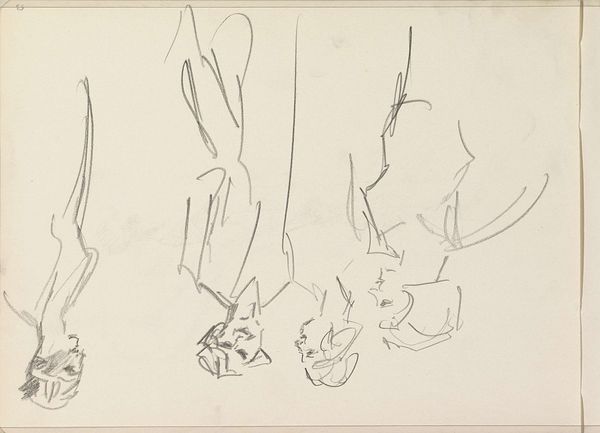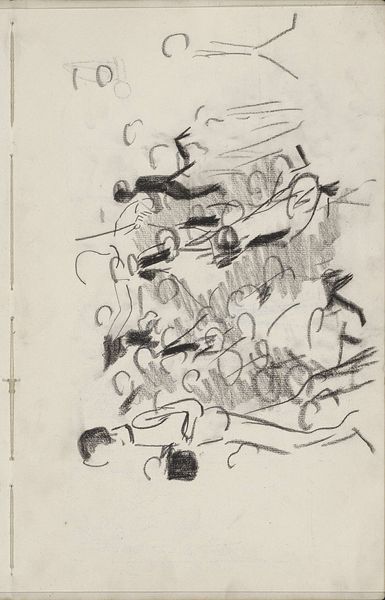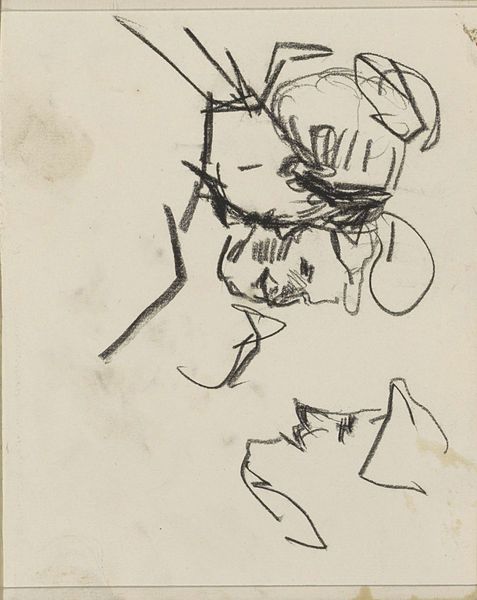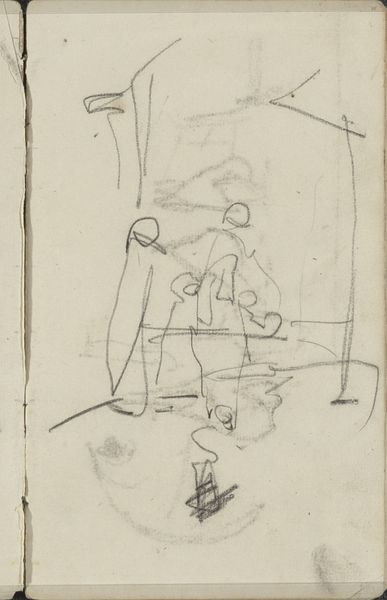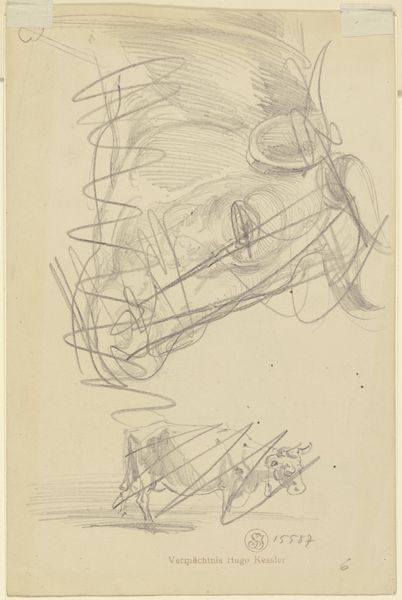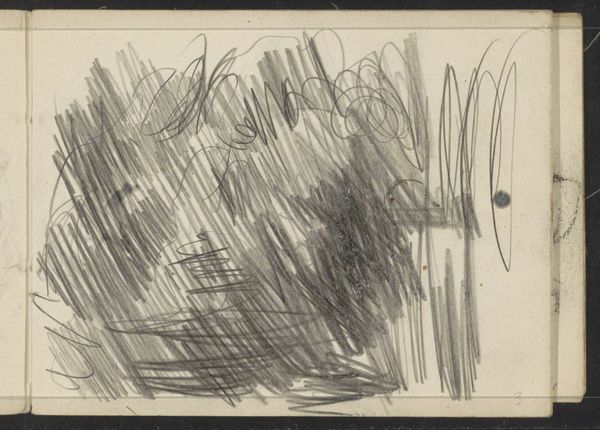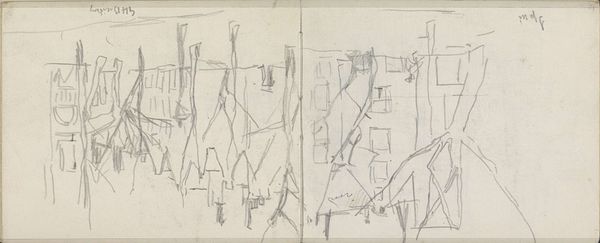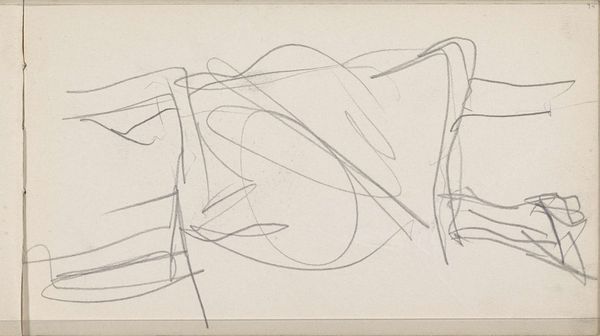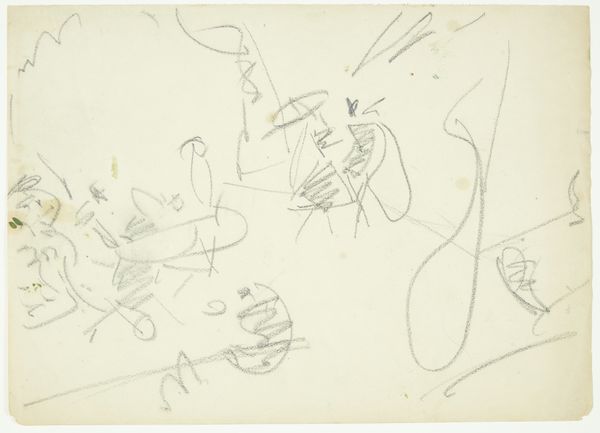
Copyright: Rijks Museum: Open Domain
Curator: So, here we have "Staande figuren," or "Standing Figures," an ink and graphite drawing by Isaac Israels, likely from between 1875 and 1934. What are your initial thoughts? Editor: Whoa, total chaos! Like someone shook a jar of alphabet soup and then sneezed on it. I can almost feel the artist’s hand moving rapidly. It is the opposite of static. Curator: Precisely. Note how Israels uses a dynamic, almost frantic line to delineate form. The sketch privileges process over precise representation, doesn't it? It's all about gesture. Editor: Gesture for sure. It feels incredibly raw and intimate, like catching a glimpse inside the artist's brain during the initial spark of an idea. The way those figures kind of emerge and dissolve… are those hats? Curator: Quite possibly. We are presented with a composition consisting of rapid strokes of pen and graphite, a whirlwind of lines that coalesce—though fleetingly—into figuration. Notice, too, how negative space functions almost as actively as the inked areas. Editor: It really does. It's like the air around them is vibrating with energy. This drawing has an unfinished, experimental energy. As an artwork that emphasizes the unrefined essence and potential of creative exploration, it reminds me of works I make during creative block when I simply need to get something onto paper. Curator: Yes! Indeed, it speaks volumes about the generative processes underpinning representation itself. It presents not a polished likeness, but the nascent stage of observation transmuted onto paper. The seeming randomness of the composition only underscores a calculated deployment of the medium’s capabilities to explore and define form. Editor: I suppose that's one way of putting it! For me, though, its charm lies in its imperfections. It captures that fleeting moment when something is just beginning to take shape, full of possibilities. This might look to others like a doodle, but is likely, at minimum, practice that helps the artist get ready to explore, for instance, how light might affect shapes, which colors work together, or the emotional impact they will have on their audience. Curator: I concur with that emotional effect. It’s stimulating to witness the preliminary stages of artworking when thought, action and raw media coalesce. Editor: Totally. It kind of inspires me to go grab my own sketchbook and start scribbling. It's permission to make a mess!
Comments
No comments
Be the first to comment and join the conversation on the ultimate creative platform.
